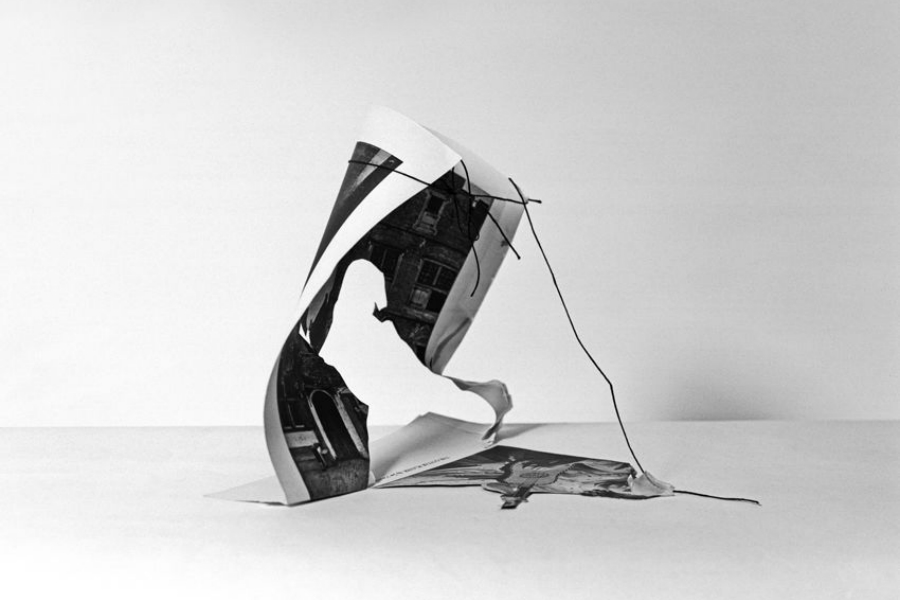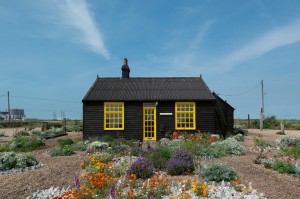A lecture, love, in love’s philosophy

A lecture in love’s philosophy? Linda Pittwood considers Open Eye Gallery’s latest exhibition, A Lecture Upon The Shadow…
“Stand still, and I will read to thee / A lecture, love, in love’s philosophy / These three hours that we have spent / Walking here, two shadows went / Along with us, which we ourselves produced / But now the sun is just above our head / We do those shadows tread”… These are the opening words of John Donne’s 17th-century metaphysical poem, A Lecture Upon The Shadow, which lends its title to the outcome of a collaboration between ShanghART, Shanghai and Open Eye, Liverpool.
To linger over Donne’s poem for a moment before we enter the exhibition in its second incarnation at Open Eye; there is both hard and softness (‘lecturing’ contrasted with ‘love’) and powerful imagery in the form of the shadow. It talks about time and change, and the phases of love. Phases, changes, and, indeed, metaphysics (a strand of philosophy concerned with abstract thought, being, time, causality and trust) can all be found in this exhibition if you look for them. There is a playful attitude towards light, as well as a long dark shadow cast by a gaggle of less than law-abiding CEOs.
The artists are divided into groups of three to occupy the two spaces that make up the ground-floor exhibition area – both countries represented in each room. David Penny (pictured, above) says of his work (displayed alongside Liang Yue and Man Yi in the first space) that it is the outcome of an interest in “still life, unwanted things… [and] photography as a productive device”. He photographs images, torn from art books and made into delicate sculptural objects, applies a colour filter and finishes them with a box frame; a process beginning and ending with an image, transforming the ephemeral into the substantial.
Either side of Penny are images that are painterly but at the same time recall 1990s fashion magazine photography; disregarding the need to sit firmly in either figuration or abstraction, or to stick with colour or black and white. They suggest stories (Man Yi, is that water running down the street or blood?), intimacy, loneliness; there are Kusama-esque spots of colour, textures, journalism; but the experience is not chaotic. They share a sensibility with images on instagram or flickr; but those websites struggle to preserve this much engagement in the medium of photography.
In the second room, Tabitha Jussa describes how, having not spoken to any former residents in her research process, there were many at the opening who wanted to “share their histories and memories” of the place in her image. She has produced a composite image, but hyper-real, not invented. New-build housing peeks through the spaces between formerly grand homes built by an Edwardian philanthropist. This kind of vista will be familiar to many people who live in Liverpool, due to the dramatic fluxes in population through the decades, and doubtless well intended changes in policy.
‘Policy’ is a word that hangs slightly menacingly in the air in this room. The final UK artist, David Jacques, isn’t dealing with conventional world leaders or authorities, but rather the new-world order of Chief Executives of multinational companies. Here they are shown as caricatures in perverse narratives; their faces, copied from corporate websites, are given Nazi uniforms and lizards’ tails. This project is a departure from his usual text-based work but consistent with his politics (it was too much for the Chinese authorities, who prohibited its showing in Shanghai). But, despite its dark subject matter, there is something comical in its ‘Ickean’ conspiratorial urgency.
The last Chinese artist has an articulate but cautious message, which is complemented by Jussa and Jacques. Fan Shi San’s Two of Us series mourns the siblings that never were due to the one child policy that controls population growth in China. Fan’s images, of all the artworks in the exhibition, embed themselves in your mind’s eye: the bleak settings and heartbreaking facial expressions communicate the loneliness many experience as a consequence of being only children. Each pair of figures look sadly away from each other, unable to offer comfort to their imaginary twin.
Twinning is an appropriate theme, as it is likely the reason that this exhibition came to be. Liverpool and Shanghai have been ‘twinned’ since 1999. There are some obvious reasons for this particular pairing: both regional capitals gained their wealth and character through their ports, which acted as windows to the world. In A Lecture Upon The Shadow, we are invited to consider the similarities and differences of these two locations, and also offered an example of what is possible with a collaboration between a private and a public organisation.
Visually, the art of these six artists sits easily together, despite the variety of approaches. There is inquisitiveness and questioning (of life and the photography process) which can be found in all of the artists. Perhaps the curators borrowed Donne’s imagery as even after 400 years academics cannot come up with a definitive interpretation of his poem, and so it provides only the loosest of frameworks. However, curatorial looseness doesn’t diminish enjoyment, the artists are individually memorable and collectively they produce a show of very high quality.
Linda Pittwood
A Lecture Upon the Shadow runs at Open Eye Gallery until 17 February 2013





